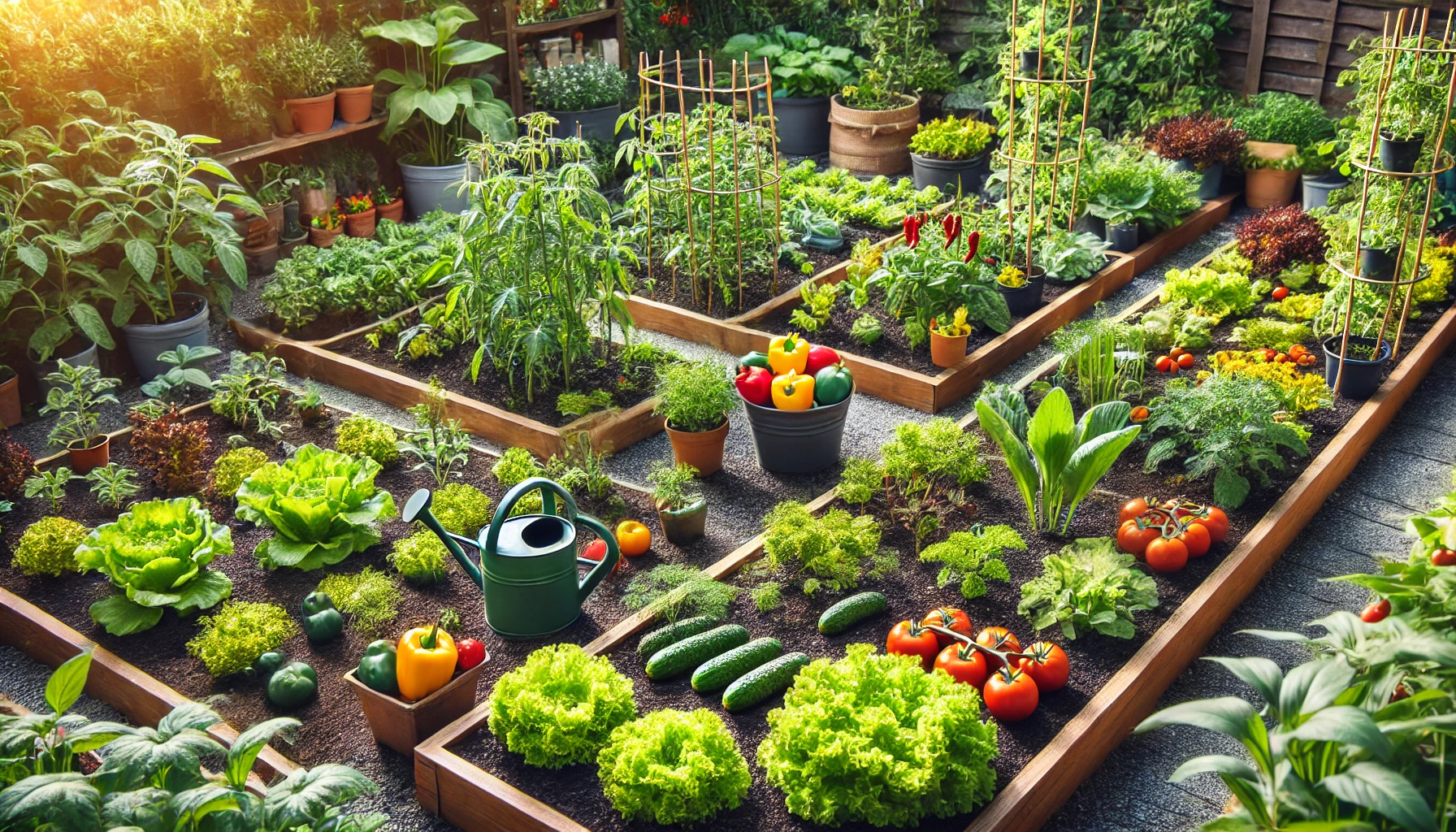Growing your own vegetables is a rewarding and cost-effective way to enjoy fresh produce. Whether you have a large backyard, a small patio, or just a few containers, anyone can grow vegetables at home with a little planning and care. In this article, we’ll guide you through the steps to start and maintain a successful vegetable garden.
Step 1: Choose the Right Location
Location is key to the success of your vegetable garden. Vegetables need plenty of sunlight and good air circulation.
- Sunlight: Most vegetables need at least 6–8 hours of direct sunlight per day. Choose a sunny spot in your garden or on your balcony.
- Soil Quality: Vegetables grow best in well-draining, nutrient-rich soil. You can improve soil quality by adding compost or organic matter.
- Accessibility: Make sure your garden is easy to access for planting, watering, and harvesting.
Step 2: Plan Your Garden Layout
Planning your garden layout helps you organize your plants for the best growth and productivity.
- Raised Beds or Containers: If you have limited space, consider using raised beds or containers. These are easier to manage and provide better drainage.
- Companion Planting: Some vegetables grow well together, while others don’t. For example, tomatoes and basil make great companions, while carrots and onions should be spaced apart. Plan your layout to take advantage of companion planting.
- Row Spacing: Make sure to space your rows or plants according to their size. Larger plants like squash and pumpkins need more space, while herbs and lettuce can grow closer together.
Step 3: Prepare the Soil
Good soil is the foundation of a productive vegetable garden.
- Test Your Soil: You can test your soil’s pH and nutrient levels using a soil test kit. Vegetables generally prefer slightly acidic soil (pH 6.0–7.0).
- Add Organic Matter: Incorporate compost or well-rotted manure into your soil to improve its texture and fertility. This will help your plants grow strong and healthy.
- Loosen the Soil: Use a garden fork or tiller to loosen the soil before planting. This helps improve aeration and allows roots to grow more easily.
Step 4: Choose the Right Vegetables for Your Climate
Not all vegetables thrive in every climate, so it’s important to choose varieties that are suited to your growing conditions.
- Cool-Season Crops: If you live in a cooler climate, grow vegetables like lettuce, spinach, peas, and broccoli in early spring or fall.
- Warm-Season Crops: In warmer climates, vegetables like tomatoes, peppers, beans, and cucumbers thrive in the summer months.
- Heirloom Varieties: Consider growing heirloom varieties of vegetables for unique flavors and better disease resistance.
Step 5: Plant Your Vegetables
Once you’ve prepared your soil and chosen your vegetables, it’s time to plant.
- Planting Depth: Each vegetable has a recommended planting depth. Follow the instructions on the seed packet or plant tag for the best results.
- Watering: Water your plants immediately after planting. Keep the soil consistently moist, but not soggy, especially during germination.
- Spacing: Make sure to plant your vegetables at the correct spacing to give them room to grow. Crowding can lead to competition for nutrients and water.
Step 6: Care for Your Vegetable Garden
Maintaining your vegetable garden requires regular care and attention.
- Watering: Water your plants early in the morning or late in the evening to prevent evaporation. Keep the soil moist but not waterlogged.
- Mulching: Apply mulch around your plants to conserve moisture, suppress weeds, and keep the soil cool.
- Weeding: Regularly remove weeds that compete with your vegetables for nutrients and water. Use mulch or landscape fabric to reduce weed growth.
- Fertilizing: Feed your plants with organic fertilizers or compost during the growing season to encourage strong growth.
Step 7: Harvest Your Vegetables
One of the most rewarding aspects of gardening is harvesting your own food.
- Harvesting Time: Different vegetables have different harvest times. For example, lettuce can be harvested in about 4–6 weeks, while tomatoes take longer to mature. Check the seed packet or plant tag for specific harvest times.
- Pick at the Right Time: Harvest vegetables when they are ripe for the best flavor and texture. Picking them too early or too late can affect taste and quality.
- Harvest Regularly: Harvesting regularly encourages your plants to continue producing. For example, picking beans, zucchini, and tomatoes frequently promotes more growth.
Enjoy Fresh, Homegrown Vegetables
Growing your own vegetable garden at home is a fulfilling and sustainable way to enjoy fresh produce. With careful planning, attention to soil quality, and proper maintenance, you can create a thriving garden that provides delicious and nutritious vegetables throughout the growing season. Whether you have a small balcony or a large backyard, anyone can enjoy the rewards of home gardening.
